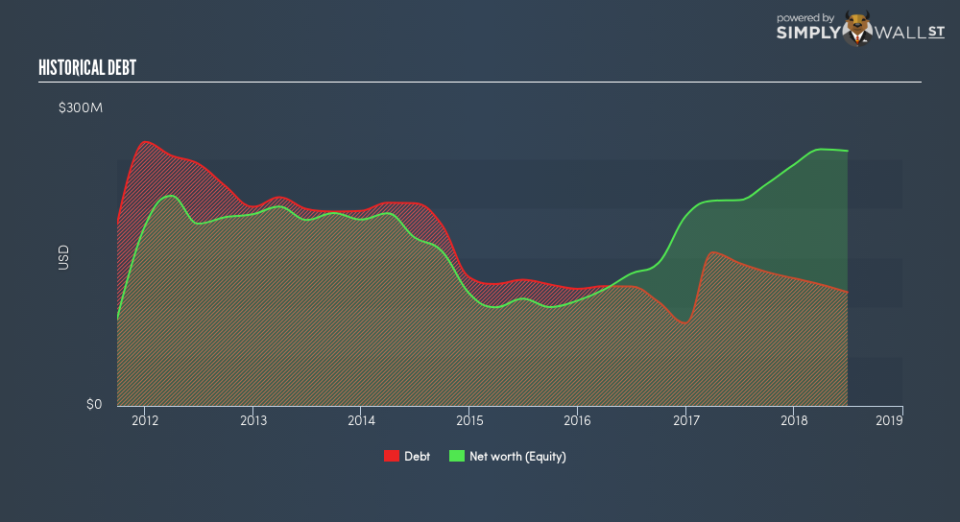What is Behind Stoneridge Inc’s (NYSE:SRI) Superior ROE?

This analysis is intended to introduce important early concepts to people who are starting to invest and want to learn about Return on Equity using a real-life example.
Stoneridge Inc (NYSE:SRI) delivered an ROE of 21.5% over the past 12 months, which is an impressive feat relative to its industry average of 14.4% during the same period. While the impressive ratio tells us that SRI has made significant profits from little equity capital, ROE doesn’t tell us if SRI has borrowed debt to make this happen. Today, we’ll take a closer look at some factors like financial leverage to see how sustainable SRI’s ROE is.
Check out our latest analysis for Stoneridge
Breaking down ROE — the mother of all ratios
Return on Equity (ROE) is a measure of Stoneridge’s profit relative to its shareholders’ equity. For example, if the company invests $1 in the form of equity, it will generate $0.21 in earnings from this. While a higher ROE is preferred in most cases, there are several other factors we should consider before drawing any conclusions.
Return on Equity = Net Profit ÷ Shareholders Equity
ROE is measured against cost of equity in order to determine the efficiency of Stoneridge’s equity capital deployed. Its cost of equity is 10.8%. Given a positive discrepancy of 10.7% between return and cost, this indicates that Stoneridge pays less for its capital than what it generates in return, which is a sign of capital efficiency. ROE can be broken down into three different ratios: net profit margin, asset turnover, and financial leverage. This is called the Dupont Formula:
Dupont Formula
ROE = profit margin × asset turnover × financial leverage
ROE = (annual net profit ÷ sales) × (sales ÷ assets) × (assets ÷ shareholders’ equity)
ROE = annual net profit ÷ shareholders’ equity
Essentially, profit margin shows how much money the company makes after paying for all its expenses. Asset turnover shows how much revenue Stoneridge can generate with its current asset base. The most interesting ratio, and reflective of sustainability of its ROE, is financial leverage. Since financial leverage can artificially inflate ROE, we need to look at how much debt Stoneridge currently has. The debt-to-equity ratio currently stands at a low 44.6%, meaning the above-average ROE is due to its capacity to produce profit growth without a huge debt burden.
Next Steps:
While ROE is a relatively simple calculation, it can be broken down into different ratios, each telling a different story about the strengths and weaknesses of a company. Stoneridge’s above-industry ROE is encouraging, and is also in excess of its cost of equity. Its high ROE is not likely to be driven by high debt. Therefore, investors may have more confidence in the sustainability of this level of returns going forward. ROE is a helpful signal, but it is definitely not sufficient on its own to make an investment decision.
For Stoneridge, I’ve put together three essential aspects you should further research:
Financial Health: Does it have a healthy balance sheet? Take a look at our free balance sheet analysis with six simple checks on key factors like leverage and risk.
Valuation: What is Stoneridge worth today? Is the stock undervalued, even when its growth outlook is factored into its intrinsic value? The intrinsic value infographic in our free research report helps visualize whether Stoneridge is currently mispriced by the market.
Other High-Growth Alternatives : Are there other high-growth stocks you could be holding instead of Stoneridge? Explore our interactive list of stocks with large growth potential to get an idea of what else is out there you may be missing!
To help readers see past the short term volatility of the financial market, we aim to bring you a long-term focused research analysis purely driven by fundamental data. Note that our analysis does not factor in the latest price-sensitive company announcements.
The author is an independent contributor and at the time of publication had no position in the stocks mentioned. For errors that warrant correction please contact the editor at editorial-team@simplywallst.com.

